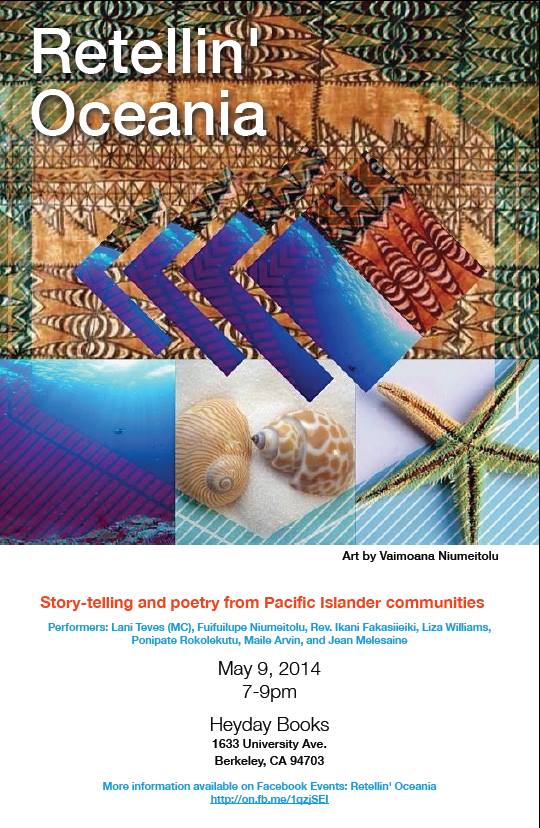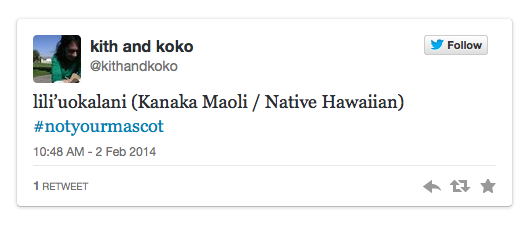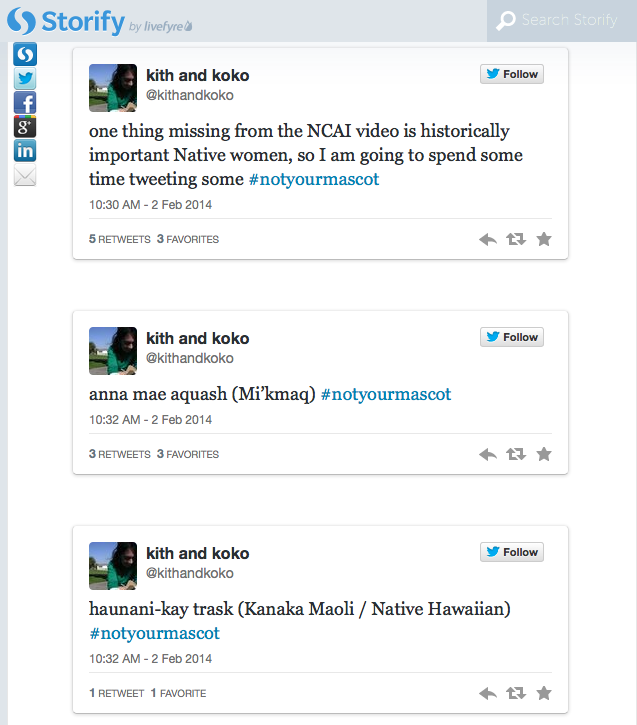This past week, my heart has been wrapped up in the public hearings being held in Hawai’i by the US Department of Interior regarding federal recognition for Native Hawaiians. There is so much to say about it that I am a little bit speechless. Perhaps it is more accurate to say that it is difficult to say anything about this process without saying it collectively, in conversation with other Native Hawaiians and allies of the Hawaiian independence movement.
Here in California, where no public meetings are being held despite the fact that nearly 75,000 Native Hawaiians live in California (many of whom, myself included, would love to live in Hawai’i if we could), I have been watching the meetings online, streamed live by ʻOlelo community television. It is a gift to be able to watch the meetings but it is also wrenching and full of emotion. It is hard to watch alone. I see family and friends and leaders whom I admire. There are whole families who step up to the mic to testify: parents describing their pride in their keiki (children) who can speak ʻolelo Hawaiʻi (Hawaiian language) and learn Hawaiian history today when those rights were denied to them and their own parents. There is an infamous white retired philosophy professor who testifies that Hawaiian sovereignty is “ethnic apartheid,” while wearing an aloha shirt and a kukui nut lei. There is over and over again (probably around 90% of the testimonies) a very clear and intelligent statement of the fact that our nation exists, that our sovereignty separate from the United States has never been extinguished, that the answer to the federal governmentʻs questions about if they can “assist” us in establishing a government is aʻole. No.
As I have been watching online, I have also been texting and tweeting and writing on Facebook, to share my reactions with other Native Hawaiians who are also watching from afar. At least two people I know have been gamely live transcribing the meetings as much as they can and posting it on Facebook for all who canʻt access the live stream. In between just sharing what is being said, we share our outrage (at said retired philosophy professor, for example) and pride and anger and hope, which is exactly what the people in the meetings we are watching are doing. We turn to each other and community public access television because the mainstream media is barely covering these meetings, and when they do, they are largely characterizing the meetings as a space of savagery- a space where rude, angry, yelling, “fringe,” Native Hawaiians are drowning out the voices of “moderate” Hawaiians. In this manner, the media reports only what it already knew about Hawaiians: that we are unruly, hostile, ungrateful and uncivilized. The mainstream media also thereby paints federal recognition as “neutral” or “rational,” when true reporting would be listening to the testimony after testimony that is very precisely and critically analyzing why that story about federal recognition for Native Hawaiians is simply not true. Though anger and occasional yelling are present in the meetings, they are certainly not the only story to be told. There is also singing, in joy and protest. There is also crying, at the injustice pressed into our bones for decade upon decade, and at the beauty of seeing elders and children state their minds. A man says, “To me, the overthrow happened yesterday,” and precedes to tell us about how his grandpa used to make ice cream for Queen Liliʻuokalani. “Conduct bemoaned,” says the Star-Advertiser. We know better.
There is more to say and I am working on ways to say them in collaboration with friends and colleagues. For now I want to share some links, as many people, myself included, have been searching for ways to see the testimonies online (live and archived).
VIDEO LINKS (UPDATED):
- ʻOlelo Community Television is televising and live streaming many of the meetings on Oʻahu and Kauaʻi. They also have information from partner stations on Maui and the Big Island. Currently available through ʻOlelo are 4 of the videos of the Oʻahu meetings, and a link from Akakū of the Lanaʻi meeting. See the broadcast information and links to livestreams and recorded videos (“Watch on Demand”) here: http://www.olelo.org/recognition/
- The meetings on Moloka’i and Lanaʻi are available on Vimeo, through Akakū here: http://vimeo.com/akaku/videos
- I believe Akakū will also be livestreaming the Maui meetings July 5-8.
- Transcripts I made (imperfect, as they are just what I was able to get down while watching the livestreams) of the Molokaʻi and Waimea, Kauaʻi meetings are available on Storify here: https://storify.com/kithandkoko
SOME OTHER CRITICAL COVERAGE
- Sept. 30, 1897, “Strangling Hands Upon a Nationʻs Throat,” by Miriam Michelson in the San Francisco Call newspaper. Many testimonies at the June 28, 2014 meeting on Molokaʻi quoted anti-annexationists quoted in this article.
- June 28, 2014, ” Hawaiian Sovereignty 101: The Growing Fight for Native Independence,” interview with Kēhaulani Kauanui, by Gale Courey Toesing, in Indian Country Today Media Network.
- June 27, 2014, “No Aloha: Native Hawaiians Against Interior’s Relationship Proposal,” by Gale Courey Toesing, in Indian Country Today Media Network.
- June 27, 2014, “Hawaiian independence activists won’t be silenced,” interview with Jon Osorio for Radio Australia.
- June 26, 2014, “Media Coverage of DOI Hearings Off Base,” by ‘Umi Perkins on his blog theumiverse.
- June 24, 2014, “Overthrow Redux?” by Judy Kertész in the Hawaii Independent.
- June 23, 2014, “Federal panel hears a resounding ‘no’ at Honolulu hearing,” by Ikaika Hussey in the Hawaii Independent.
- June 23, 2014, “So the Interior Department Wants Input on Hawaiian Nation-Building?” by Trisha Kehaulani Watson in Honolulu Civil Beat.
- June 22, 2014, “The Press for Native Hawaiian Federal Recognition is Presumptuous,” by Randall Akee in the Hawaii Independent.
SCHEDULE OF PUBLIC MEETINGS IN HAWAI’I AND CONSULTATIONS WITH INDIAN COUNTRY
Public Meetings in Hawaii – June 23 through July 8
Oahu
Monday, June 23 — Honolulu – 9:00 a.m. to 12:00 p.m.
Hawaii State Capitol Auditorium
Monday, June 23 — Waimanalo – 6:00 p.m. to 9:00 p.m.
Waimanalo Elementary and Intermediate School
Tuesday, June 24 — Waianae Coast – 6:00 p.m. to 9:00 p.m.
Nanaikapono Elementary School
Wednesday, June 25 — Kaneohe – 6:00 p.m. to 9:00 p.m.
Heeia Elementary School
Thursday, June 26 — Kapolei – 6:00 p.m. to 9:00 p.m.
Makakilo Elementary School
Lanai
Friday, June 27 — Lanai City – 6:00 p.m. to 9:00 p.m.
Lanai Senior Center
Molokai
Saturday, June 28 — Kaunakakai – 1:00 p.m. to 4:00 p.m.
Kaunakakai Elementary School
Kauai
Monday, June 30 — Waimea – 6:00 p.m. to 9:00 p.m.
Waimea Neighborhood Center
Tuesday, July 1 — Kapaa – 6:00 p.m. to 9:00 p.m.
Kapaa Elementary School
Hawaii Island
Wednesday, July 2 — Hilo – 6:00 p.m. to 9:00 p.m.
Keaukaha Elementary School
Thursday, July 3 — Waimea – 10:00 a.m. to 1:00 p.m.
Waimea Community Center
Thursday, July 3 — Kona – 6:00 p.m. to 9:00 p.m.
Kealakehe High School
Maui
Saturday, July 5 — Hana – 1:00 p.m. to 4:00 p.m.
Hana High and Elementary School
Monday, July 7 — Lahaina – 6:00 p.m. to 9:00 p.m.
King Kamehameha III Elementary School
Tuesday, July 8 — Kahului – 6:00 p.m. to 9:00 p.m.
Pomaikai Elementary School
Indian Country Consultations – July 29 through August 7
Tuesday, July 29 — Minnesota – 9:00 a.m. to 12:00 p.m.
Mystic Lake Casino Hotel, Prior Lake, MN
Wednesday, July 30 — South Dakota – 1:00 p.m. to 4:00 p.m.
Rushmore Civic Center, Rapid City, SD
Friday, August 1 — Washington – 9:00 a.m. to 12:00 p.m.
Tulalip Resort, Seattle, WA
Tuesday, August 5 — Arizona – 9:00 a.m. to 12:00 p.m.
Talking Stick Resort, Scottsdale, AZ
Thursday, August 7 — Connecticut – 9:00 a.m. to 12:00 p.m.
Mohegan Sun, Uncasville, CT


